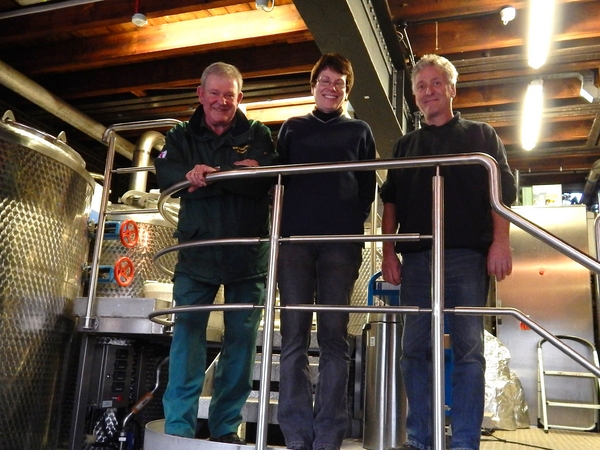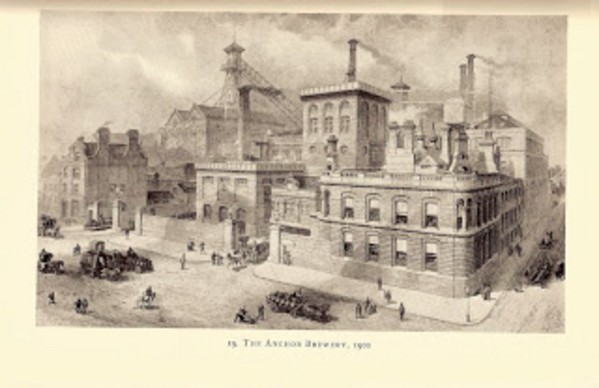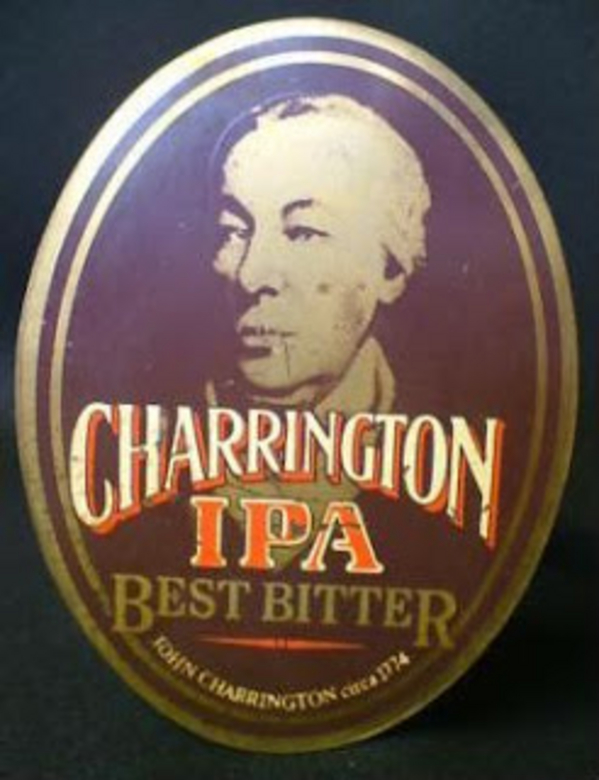Cockney classic IPA recreated in Burton
Added: Wednesday, December 16th 2015

Steve Wellington is a master brewer, meticulous to his finger tips and the prongs of his mashing fork. When he set out recreate a long-lost London beer, Charrington IPA, the Charrington family handed him the original recipe but he had no access to the yeast culture used at the East London brewery that closed in 1975.
At the height of the IPA boom in the 19th century, Charrington opened a second brewery in Burton-on-Trent where Steve Wellington now runs the William Worthington Brewery in the National Brewery Centre. Steve decided that the Worthington yeast would make an ideal substitute but the nearest brewery to Burton using Worthington yeast was the former Bass brewery in Tadcaster, Yorkshire, now owned by Molson Coors.
With the blessing of Leisure Solutions, owner of the museum and brewery, Steve spent £150 on a round taxi trip to Tadcaster to pick up a precious vial of Worthington yeast. He was now in business and the first batch of the revived IPA was launched to great approval, with Tom Charrington from the family in attendance.
One of the great London beers was the victim of the frenzy of mergers and takeovers that scarred British brewing in the 1960s and 1970s. Charrington’s Anchor Brewery (below) was based in the Mile End Road in East London and could trace its origins back to the late 18th century. It grew to become one of the major London brewers and at its peak in the 1960s was producing 750,000 barrels a year.
As a result of a merger with Hoare’s Red Lion Brewery in the 1930s, Charrington acquired the famous Toby Jug logo and as well as IPA it brewed Toby Light, Bitter and Mild. The combined pub estates of Charrington and Hoare amounted to 2,000 outlets and it was the pubs that attracted the attention of bigger players in the beer market.
In the 1960s Charrington became part of a new national group called Charrington United Breweries. When Bass joined the consortium it was renamed Bass Charrington in 1967. Bass, Britain’s biggest brewer, now called the shots and Charrington and its IPA were a nuisance: the Charrington name disappeared from the consortium’s title in 1979 and became Bass Brewers. IPA at 4.4% was the same strength as Draught Bass and Bass responded by reducing the London beer to 3.9%.
Its main aim was to pump the Charrington pub estate with Draught Bass and the newly acquired Carling Black Label lager. In 1975 it closed the Anchor Brewery and moved Charrington IPA first to the Springfield Brewery in Wolverhampton and, when that closed, to the Mitchells & Butlers’ plant in Birmingham. The beer became darker and sweeter in the West Midlands fashion, a long way removed from a London hoppy IPA. It moved yet again, its ABV further reduced, to be brewed under licence by Shepherd Neame until it was put out of its misery.

But now it’s been restored, lovingly and painstakingly, by Steve Wellington who spent his entire brewing career with Bass, starting in the Old Brewery in Burton in 1965. In the 1990s he ran the small Museum Brewery within the museum, which was the old pilot kit from Mitchells & Butlers in Birmingham.
He was instrumental in brewing the famous bottled IPA Worthington’s White Shield that had been sidelined by Bass and sent out to be brewed under licence by King & Barnes in Horsham, Sussex. Molson Coors, who had taken over the Bass breweries and brands, agreed to put in a £35,000 bottling line for White Shield and sales of the beer became so strong that production was transferred to the main brewery.
Mark Hunter, the boss of Molson Coors, accepted Steve’s proposals to brew a range of old beers from the Bass range and invested £1.2 million in a 25-barrel plant named the William Worthington Brewery, which opened in 2011. Steve’s main aim was to restore a famous Victorian beer, Worthington E, which since the merger of Bass and Worthington in 1926 had become identical to Draught Bass.
It was turned into one of the infamous keg beers of the 1960s and 70s that inspired the launch of CAMRA but Steve restored its lustre in cask form. He also brought back a famous Bass imperial stout, P2, and – occasionally -- Bass No 1 barley wine. He plans to brew M&B Mild and a famous Derby beer, Offiler’s.
Charrington IPA is 4.4% and is brewed with pale and crystal malts with invert sugar. The main hops are Challenger and Fuggles with Northdown used as a late hop in the hop back following the copper boil. Steve remembers from his youth the smell of hops from Cobb’s Brewery in Margate, Kent. When he became a brewer, he discovered the hops he’d smelt were the Northdown variety and he has used them ever since for their fine and delicate floral and fruity character.
The beer has a pale copper colour and an aroma of earthy, piny and spicy hops balanced by nutty grain. Bitter hops dominate the palate with juicy malt and tangy fruit. The finish starts bittersweet but the finale is bitter and hoppy. Surprisingly, the beer has a modest 31 units of bitterness but drinks bitterer than the number suggests. Steve plans to tweak the ABV slightly to 4.5% to bring it into line with the strength of modern interpretations of IPA.
When Steve retired, the Worthington Brewery closed on the grounds of health and safety, which he thought was ludicrous. Eventually Molson Coors agreed to sell the plant to Mike Stickland at Leisure Solutions, who urged Steve to return and take the brewery out of its mothballs. As well as Worthington E, he brews a draught version of White Shield and Red Shield, both of which are bought and distributed by Molson Coors.
Steve (left in picture) has been joined in the brewery by Caroline Horrabin, who previously worked in the Molson Coors laboratory, and Martin Hodson from the Black Hole Brewery in Burton. In due course, Steve will hand all brewing to them and return to well-earned retirement.
Charrington IPA is available in the bar at the National Brewery Centre and a large number of publicans in Derby are asking for supplies. It deserves to be sold in London and one person who would welcome it back in the capital is Robert Humphreys MBE. He started his career in brewing and pubs with Charrington, became the brewery’s public relations manager and, following its closure, became director of public relations for Bass Brewers.
He has an encyclopaedic knowledge of the Charrington estate in London and other parts of the south-east.
As well as Charrington IPA he recalls the brewery producing a bottled Toby Ale that rivalled Double Diamond in popularity and a Royal Toby barley wine that Bass replaced with its No 1. He says the Anchor Brewery was fiercely traditional with open fermenters and all vessels made of copper. But he said it had become shabby and neglected. It needed investment, which Bass was not prepared to make available and so it closed.
Perhaps, like the new Truman’s Brewery at Hackney Wick, a new Charrington brewery may rise from the ashes. It wouldn’t produce 750,000 barrels a year but, if Leisure Solutions, owner of the Worthington Brewery agreed, Charrington IPA could be brought back to its place of birth.










